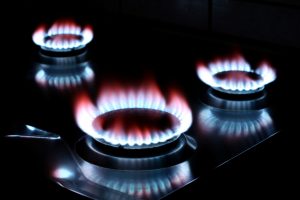 If we had to make a wager on the type of heater you use to warm up your house during our chilly New York winters, we’d always bet on a natural gas furnace. The odds are in our favor because these furnaces are the most popular in the country, and their popularity is higher in places with chilly winters. A natural gas furnace is a cost-effective method of supplying high levels of heat to a house, much more so than an electric furnace, and because most homes have ventilation systems in them, they are also more common than boilers.
If we had to make a wager on the type of heater you use to warm up your house during our chilly New York winters, we’d always bet on a natural gas furnace. The odds are in our favor because these furnaces are the most popular in the country, and their popularity is higher in places with chilly winters. A natural gas furnace is a cost-effective method of supplying high levels of heat to a house, much more so than an electric furnace, and because most homes have ventilation systems in them, they are also more common than boilers.
Although a gas furnace isn’t a naturally dangerous appliance, any use of natural gas has the potential for toxic gas leaks and combustion dangers. With a gas furnace, the main concern is the development of cracks in the heat exchanger. A cracked exchanger calls for immediate heater repair in Staten Island, NY from our HVAC technicians. Leaving a cracked heat exchanger alone creates the potential for enormous safety hazards.
Wait, What’s a Heat Exchanger?
Basically, it’s the part of a gas furnace that applies heat to the air the blower fan sends into the ventilation system. A heat exchanger is a metal chamber, often clam-shaped and arranged in rows in the furnace, where the hot combustion gas from the burners collects. The intense heat of the gas raises the temperature of the metal walls, making the outside of the heat exchanger extremely hot. Air from the blower flows around the heat exchangers and picks up heat from them. This allows the furnace to apply the heat of the combustion gas to the air without letting the gases contact the air.
Why Would a Heat Exchanger Crack?
A heat exchanger in a furnace undergoes a large amount of stress. Each time one heats up, the metal expands. Over time, the constant expansion and contraction can weaken the metal. More serious is the chance of corrosion. The reaction between combustion gas and metal can eventually cause corrosion, especially if the gas isn’t well-vented out the flue. Corrosion weakens metal, making the strain on the heat likely to create a crack.
Why This Is a Dangerous Situation
A crack on a heat exchanger may look small and insignificant. You could pour water into a cracked heat exchanger and not a drop of water would leak out. But these cracks widen when the heat exchanger expands from heat, letting the unhealthy gases that are supposed to be vented into the flue instead go right into the air traveling to the living spaces. Problems with people who have started to experience nausea and lightheadedness in their homes have sometimes been traced to cracked exchangers. In fact, some cases of “haunted houses” have turned out to be hallucinations from toxic gases escaping cracked heat exchangers. (We thought we’d mention this as appropriate for Halloween.)
If you have an older furnace (10 years or more), you must always keep up with regular heating maintenance for the system. Our technicians will catch signs of cracked heat exchangers so they can be fixed. In some cases, the best option is to have the aging furnace replaced.
Bob Mims Heating & Air Conditioning: Serving Staten Island’s Heating and A/C needs since 1955.

